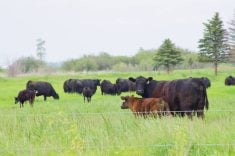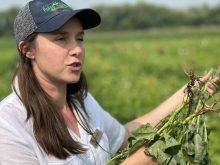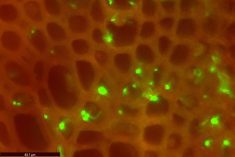Manitoba farmers have a new window into livestock research conducted in the province.
A recent update to the website for the National Centre for Livestock and the Environment (NCLE) has a central goal of engaging producers more effectively.
“A lot of the funding for this type of research does really come from producers,” says NCLE research development coordinator Peter Frohlich. “So, we have to make sure that the information that we generate speaks to them, and if we can provide information that is adaptable on the farm in the best possible way and in the quickest way, then we’ve done our job.”
Read Also

Port of Churchill revamp gathers pace
Canada’s Port of Churchill Plus update plan hopes to expand trade, including agriculture trade, at Manitoba’s Arctic sea port
The NCLE is not a physical centre, as the name would imply. It’s more of a community of researchers from across disciplines who collaborate on research projects and focus on building a more sustainable future for the Canadian livestock sector.
The research takes place at several locations in the province, but most of it occurs at the University of Manitoba’s Glenlea Research Station south of Winnipeg.
The updated website was part of a system-wide revamping of websites attached to the University of Manitoba. The NCLE took advantage of that opportunity to include updates.
“As things change, you need to update,” says Frohlich. “So, not only did we develop a fresh new look, we also updated the site with new research information.”
[RELATED] Weaning considerations for healthy calves
The upgrade is not just about providing more useful information to viewers. It’s also about how that information is presented.
“The demands of the viewer have changed too, so we also have to cater to the changing demands of consumers, other researchers and people who are visiting the website.”
Kim Ominski, NCLE director, professor and the acting head of the Department of Animal Science at the University of Manitoba, says the website provides easy access to a comprehensive body of work conducted by NCLE researchers.
The information ranges “from practical and effective sustainable agriculture management practices to leveraging big data for a better understanding of our agro-ecosystems, as well as solutions to improve animal health and management.”
Easy to follow
The new website organizes information based on the NCLE’s three principle research themes. The first theme, “livestock as an agro-ecosystem solution,” highlights the role of livestock in food production systems through projects focused on soils, land use and greenhouse gas mitigation.
The second theme, “leveraging data to improve food systems,” emphasizes the importance of continual measuring, monitoring and modelling in order to understand complex ecosystems and transform collected data into useful decision-making tools.

The final theme, “One Health to improve animal management,” is where NCLE researchers demonstrate the value of using a multidisciplinary approach to research and more fully understand the complex connections between feed, animal care, housing and health.
The projects listed on the website each have a two or three-paragraph synopsis at the top and a drop-down menu on the side prompting viewers to “read more.” When clicked, it reveals an article outlining the research in more depth. Other drop-down menus show the research team, funders and partners, and resources.
One example is a piece titled “Expanding options for beef producers with dual-purpose grains,” that asks readers to imagine growing a dual-purpose crop that produces grain for human food and, after harvest, becomes a pasture for grazing cattle.
“A system like this is an intriguing prospect for the beef sector, which is always seeking ways to enhance the long-term adaptability and competitiveness of beef production. It may soon be possible, using the perennial intermediate wheatgrass developed at the University of Manitoba over the past 10 years,” the website notes.
[RELATED] The silage waiting game
The plain language articles have an intended audience that includes academics, researchers, farmers and agriculture industry professionals. By combining research into animal nutrition with crop science, it shows how the projects fit the multi-disciplinary approach that guides the NCLE.
Back of a napkin
Ominski says the original idea for the NCLE came about through a discussion at a faculty seminar and some notes on the back of a napkin.
“We were talking about the opportunity to update some of our facilities at Glenlea, and the conversation really started to evolve around integration,” Ominski says.
That was nearly 20 years ago but the integrated approach shaped the way the Faculty of Agriculture and Food Sciences has developed its research plans.
Ominski says the faculty have been pioneers in the area of “systems-based multidisciplinary research,” where people from different areas of expertise collaborate on projects of mutual interest.
“Our faculty was certainly one of the first out of the gate in terms of thinking along those lines,” she says.
“We have researchers that are tremendously collegial and work together across departments, from biosystems engineering to plant science to soil science to animal science.”
What has emerged is a network of people who work closely together to answer questions about complex agro-ecosystem problems.
“It’s that collective collaboration that I think is a real feature of the success of NCLE,” says Ominski.
















